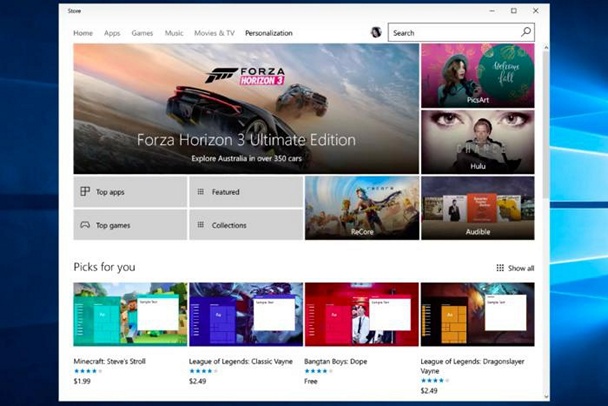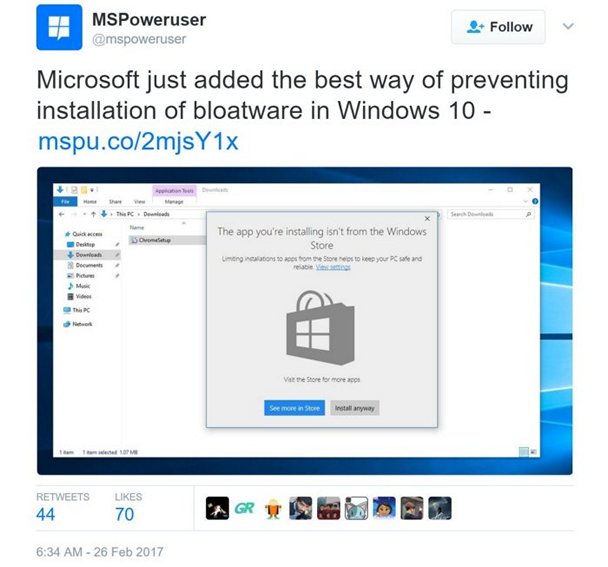New Windows 10 feature blocks desktop apps, and points to Windows Store instead
The mainstream release of Windows 10 may soon have a setting that prevents installing anything but Windows Store apps.
If you’re worried about Microsoft locking down Windows 10 PCs and locking out traditional desktop apps, this story won’t make you feel any better. Microsoft quietly added an interesting feature to Windows Insider build 15042 that can prevent users from installing traditional desktop programs (Win32 apps). Users instead are prompted to download Universal Windows Platform (UWP) apps from the Windows Store.
To be clear this feature isn’t showing up in a public build of Windows Cloud—the Windows Store-only version of Windows 10 that recently leaked (though you have to imagine it will appear there). This is the regular, everyday Insider preview release of Windows 10.
The new feature is turned off by default, as first reported by MSPowerUser. But for anyone who wants increased security (for a substantial lack of software liberty) the feature is there.
It’s easy to see situations where someone might want to go Windows Store-only. On a family PC, for example, this would prevent children from installing something they shouldn’t—as long as they weren’t using an administrator account. IT departments may also want to use this setting to lockdown PCs in corporate environments.
Power users, however, will probably never want to use this feature since it shuts you off from everything that makes the Windows ecosystem worth using. Steam, most PC games, Google Chrome, Firefox, and major image and video editing programs would all be out. The only exception would be any Win32 “Centennial” apps such as Evernote that were re-packaged for the Windows Store.
To find the new setting in build 15042, go to the new “Apps & features” area of the Settings app. At the top, under “Installing apps,” there is a drop-down menu with three options: “Allow apps from anywhere,” “Prefer apps from the Store, but allow apps from anywhere,” and “Allow apps from the Store only.”
The first and last options are self-explanatory, but the middle option is a little confusing. With this option enabled, you will still be able to install Win32 apps, but before you get to install it, Windows will throw up a warning window, as explained by Paul Thurrott. “The app you’re installing isn’t from the Windows Store. Limiting installations to apps from the Store helps to keep your PC safe and reliable,” the warning says. Then at the bottom of the window there are two options: See more in Store and Install anyway.
The story behind the story: Assuming this feature makes it into the final version of the Windows 10 Creators Update, Microsoft will likely present it as a security feature. Apple has done something similar on Macs since 2012 with Gatekeeper. But for Microsoft, this may very well be the next step towards a UWP-only world on Windows 10.
Walled garden concerns
The UWP platform is nowhere near as capable as Win32 right now, but presumably it will be one day. The good news is there’s nothing to prevent developers from creating UWP-based stores and apps that exist outside, and compete with, the Windows Store. The problem? Windows 10 currently doesn’t let you install non-Windows Store UWP apps without turning on developer mode. That’s a huge disadvantage that Microsoft may not be too keen to correct—and one that worries Epic CEO Tim Sweeney.
Could Microsoft get evil in a UWP-only world, shut out its competitors, and bask in the revenue sharing all developers must accept to publish an app in the Windows Store? Yes, absolutely. Will it? Considering the company’s history with anti-trust actions, hopefully not.
But if it does, there’s always Linux and, for gamers, the Vulkan graphics API.
source: pcworld











